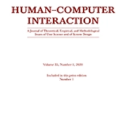The detection of exoplanets in high-contrast imaging (HCI) data hinges on post-processing methods to remove spurious light from the host star. So far, existing methods for this task hardly utilize any of the available domain knowledge about the problem explicitly. We propose a new approach to HCI post-processing based on a modified half-sibling regression scheme, and show how we use this framework to combine machine learning with existing scientific domain knowledge. On three real data sets, we demonstrate that the resulting system performs up to a factor of 4 times better than one of the currently leading algorithms. This has the potential to allow significant discoveries of exoplanets both in new and archival data.
翻译:在高相吸成像(HCI)数据中探测出外行星取决于后处理方法,以去除主星的虚假光线。 到目前为止,目前用于这项任务的现有方法几乎没有明确地利用任何有关该问题的现有域知识。 我们提议根据修改过的半成像回归法,采用新的办法处理 HCI 后处理,并展示我们如何利用这个框架将机器学习与现有科学领域知识结合起来。 在三个真实的数据集中,我们证明所产生的系统比目前领先的算法的比当前一个算法高出4倍。这有可能使新数据和档案数据中的外行星都能大量发现。



